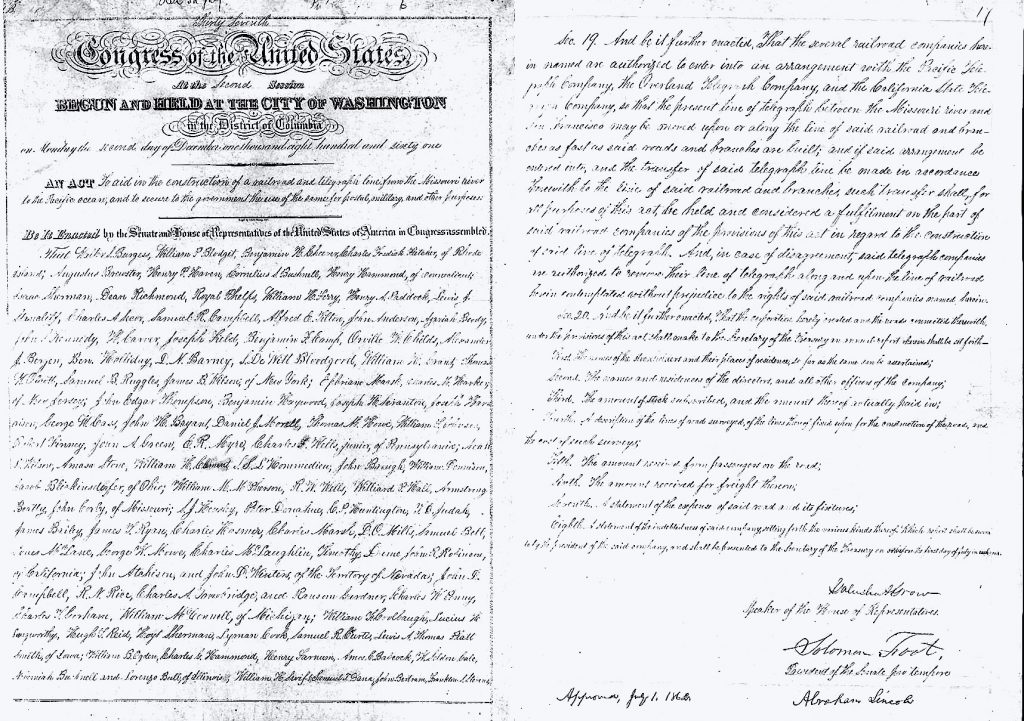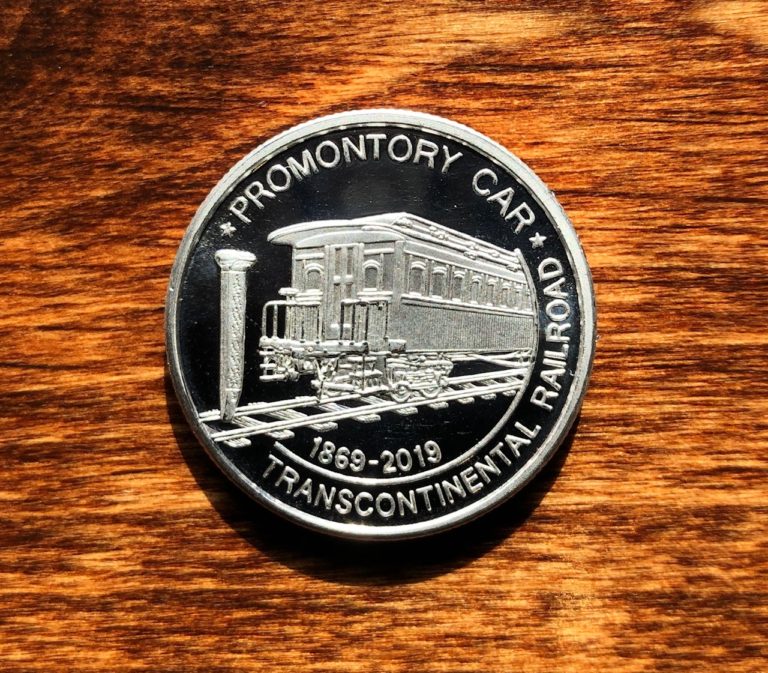Carson City, NV — Nevada’s relationship with railroads began around 1860 when an application was made to the Silver State’s first legislature for a railroad franchise from Carson City to Virginia City.

In 1862, President Lincoln signed the Pacific Railroad Bill into law — a law that provided federal aid to private entities to construct a transcontinental railroad. This began the 7-years-long race to construct rail across the country, including through Nevada.
The First Transcontinental Railroad
The goal of connecting the Eastern U.S. and the Mississippi River to the Pacific Ocean was achieved in 1869 when the transcontinental railroad opened for through traffic on May 10, 1869. This coast-to-coast railroad connection revolutionized the settlement and economy of the Western U.S. It aligned the western states and territories with the rest of the country, making the nationwide transport of passengers and goods much faster and less expensive.
As miles of track were laid in Nevada, rail touched some cities and created several others, while bringing people and goods to the mines, the ocean, and the rivers. It all helped to connect the country as a whole and connect the Silver State to the rest of the U.S.

To memorialize the 150th anniversary of our nation’s first transcontinental railroad, Carson City’s two state museums — the Nevada State Museum and Nevada State Railroad Museum — collaborated on a project that highlighted 150-year-old artifacts in both museums’ collections.
The Nevada State Museum, formerly a U.S. Branch Mint, recently fired up its 150-year-old Coin Press No. 1 for the first public minting of a medallion that commemorates the Nevada State Railroad Museum’s Coach 17 — the only rail car still in existence that was present at the completion of the first transcontinental railroad at Promontory Summit in Utah.
Rail Economic Impact in Nevada
For Nevada, rail is an important means to connect rural communities to urban areas, as well as to markets across the globe, including for manufacturing, logistics, agriculture, or mining. Rail is the most cost-effective, safest, and most efficient way to move freight over land. This also saves wear and tear of the state’s roads and highways.
Rail in Nevada is integral to logistics and infrastructure. It has helped the diversification and growth of Nevada’s economy, including being one of the leading job-creating states in the U.S.
Two railroads operate over 1,193 miles of track, with more than 600 employees. Average employee wages and benefits are over $105,000. All of this infrastructure is integral to supporting the state’s international trade. In 2014 alone, the Silver State exported $7.6 billion in goods and $9.4 billion in services to customers in 186 countries and territories.
The Tech Side of Rail
The transcontinental railroad would not have been possible without the railroad innovations that date back to the original Iron Horse. Rail has always been a technology visionary, innovator and early adopter, with ongoing deployment of ever-evolving advanced technologies to maximize safety, close efficiency gaps, and protect the environment.
Those efforts continue today. Freight rail companies continue to make substantial investments in state-of-the-art technology innovations to move freight efficiently, safely and cleanly.
Railroads use technology innovations daily, including in Nevada, to evaluate infrastructure conditions and inspect equipment with greater precision and frequency than can be achieved manually. Problems are identified before they arise, often in real-time:
- Track Geometry Cars measure every inch of track to identify problem areas to keep small problems from becoming big ones.
- Smart Sensors placed alongside railroad tracks utilize a variety of sensor technologies to monitor the wear and tear on equipment strength to prevent train derailments. Sonar technology helps railroads to assess the stability of bridge piers and the integrity of a bridge itself.
- Big Data plays a key role as today’s locomotives have supercomputers onboard which can process a billion data points per second for improving safety and efficiency.
- Machine Visioning collects thousands of images per second and uses algorithms to identify potential issues faster than what is possible with manual inspections alone.
- Drones are utilized to inspect bridges and other areas of the network for a variety of safety and environmental purposes.
- Positive Train Control (PTC) is a set of innovative technologies that automatically monitors the safe operation of a train and can prevent certain kinds of human-factor incidents. By December 31, 2018, first generation PTC was in operation on 83.2% of all PTC-required route miles and the system will be fully implemented by the end of 2020.
An important component of the rail network is a railroad tie, the rectangular support laid perpendicular to the rails which helps hold them upright and keep them spaced correctly. NNDA has noted that when railroads support international Trade, are integral to our Infrastructure, and help protect the Environment, it gives a new meaning to Railroad TIE (Trade, Infrastructure & Environment). When you add the investments in Technology innovations, the result is Railroad TTIE™ (Technology, Trade, Infrastructure & Environment).
Bear in mind that U.S. freight rail traffic has increased 84% over the last several decades, and overall U.S. freight demand is forecast to increase 41% by 2040. Just as we depend on each railroad tie to support the national network, we depend on Railroad TTIE™ to help meet future needs, in Nevada and throughout the U.S.


